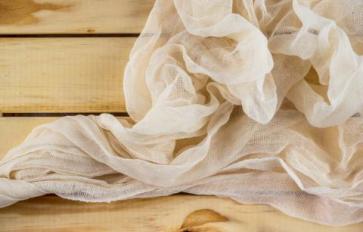
Raising rabbits for their fiber, or wool, isn't hard to do. We have raised a large herd of French Angoras for their wool, and have loved every minute of it. They are soft, cute, and even very friendly, but they do need a few additional steps in their care.
Grooming Fiber Rabbits
Keep in mind: fiber rabbits are very hairy and that hair can get long and matted. Daily or biweekly brushing that is thorough enough to get all the loose hair is important to keep matted fur to a minimum. Loose hair can lead to matting on the rabbit and hard clumps on the cage. Poop and urine can get stuck on matted hair clumps, resulting in a terrible smell. Bathing the rabbit isn't necessary. In some cases, it can be harmful because the rabbit can get too cold when it's wet. If you need to wash the hair, do it after you have clipped it from the rabbit.
Like any other rabbit, you will need to keep their nails trimmed so they don't get too long and stuck on the wire cages. This can lead to the rabbit ripping a nail off and possibly bleeding profusely. Simply cut the nails back off the tip each week to avoid them getting too long. If you mistakenly cut the rabbit, apply gentle pressure with a towel to help stop bleeding. Adding plantain from the yard or dried yarrow in a gauze pad can also help stop bleeding.
With fiber rabbits, their primary purpose is fiber. To collect the fiber, you will need to cut it from the rabbit at least once a year. We like to do this in the early summer, to remove the old coat before it gets too hot. To cut the fiber, you simply take a very sharp scissors and follow along the rabbit's body line. Don't cut too close, or you risk cutting the rabbit. Sometimes, it's helpful to have a second person hold the rabbit and cover their eyes when you are doing this. That will help to calm the rabbit and keep them more still.
Feeding Fiber Rabbits
Fiber rabbits do not require any special feed that is different from other rabbits. Simply provide plenty of high quality feed, with timothy hay for fiber. A small treat, such as an apple slice or carrot, is great once in a while, too. Keep the special treats to a minimum, otherwise the rabbit's blood sugar can rise and make them sick. Make sure your rabbits have fresh clean water daily. You can use a water bottle or a clean crock for water. Rabbits will adapt to either way.
Environment for Fiber Rabbits
Add entertainment for the rabbits in the form of toys. As playful creatures, they also need to be able to keep their teeth ground down. Safe toys such as wood chews or hard hay chews allow for both tooth care and alleviating boredom. We put in small stuffed animals for them to “mother.” Even our male rabbits, called bucks, play or cuddle with their babies. It's rather cute, to be honest. And, no, they don't chew them up. We thought they would at first, but were pleasantly surprised they didn't.
Fiber rabbits are also very large. They need some type of resting board to allow their paws to be off the hard wire cage from time to time. Your local animal supply place should sell them. They are a hard plastic that is comfortable for the rabbit to rest, with holes to allow excrement to fall through. If you can't find the hard plastic, an old scrap of carpet works wonders. We have also put non-treated wood in there for them to rest on, but they chewed that up quickly.
As you can see, taking care of fiber rabbits isn't difficult at all. They are fun, friendly, and can be a great source of yarn for the knitter/crafter in your family.
Have you ever raised fiber rabbits? What breed did you raise?








